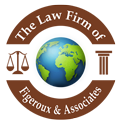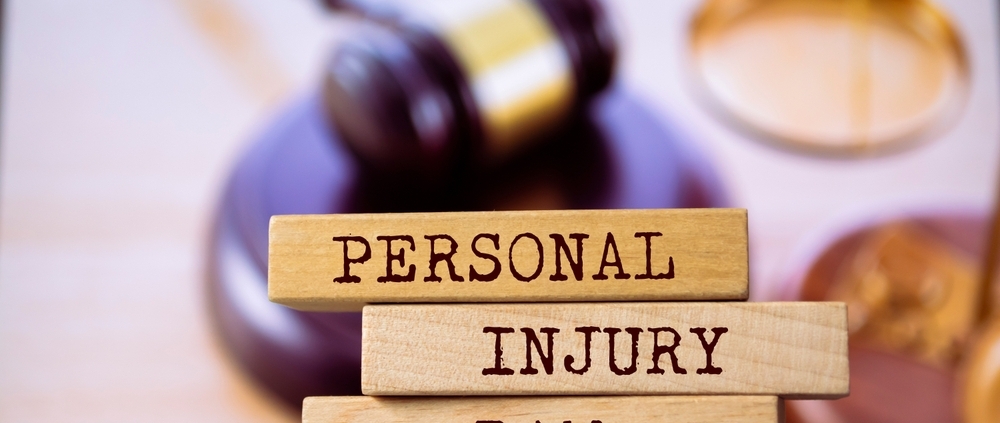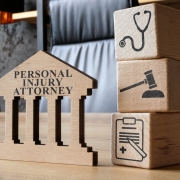Causation in Personal Injury Law: Proving the ‘But-For’ Test
By Brian Figeroux, Esq.
Causation is a fundamental principle in personal injury law, playing a central role in establishing liability. Without proving causation, plaintiffs cannot recover damages, regardless of how egregious the defendant’s behavior may seem. At the core of causation analysis is the “but-for” test, which examines whether the injury would have occurred but for the defendant’s negligent actions. This article provides an in-depth analysis of causation, emphasizing the mechanics of the “but-for” test, challenges attorneys face, legal precedents, and strategies used to prove causation in personal injury cases.
- Introduction to Causation in Personal Injury Law
Causation establishes the connection between a defendant’s conduct and a plaintiff’s injury. Personal injury claims require demonstrating that the defendant’s breach of duty directly caused harm to the plaintiff. This connection is essential for holding defendants legally responsible for damages.
Causation is typically divided into two categories:
- Cause-in-Fact (Factual Causation): Demonstrates that the injury would not have occurred but for the defendant’s actions.
- Proximate Cause (Legal Causation): Limits liability based on foreseeability and whether the harm was closely related to the defendant’s actions.
Personal injury attorneys must address both elements to establish liability effectively. However, the “but-for” test often serves as the first hurdle in this process, providing the factual basis for causation claims.
- The ‘But-For’ Test: Definition and Application
The “but-for” test asks a straightforward question:
Would the plaintiff’s injury have occurred but for the defendant’s conduct?
If the answer is no, then the defendant’s actions are considered the factual cause of the harm. If the injury would have occurred regardless of the defendant’s behavior, causation cannot be proven.
Example:
A pedestrian is hit by a car while crossing the street at a crosswalk. The driver was speeding and failed to stop in time.
- Applying the “but-for” test: Would the pedestrian have been injured if the driver had been obeying the speed limit?
- Answer: No, because obeying the speed limit would have allowed the driver to stop in time.
Key Elements of the Test:
- Direct Causation: Establishes a straightforward link between the act and the injury.
- Necessary Condition: The defendant’s act must be a necessary condition for the injury to occur.
- Exclusion of Independent Causes: It eliminates other potential causes unrelated to the defendant’s conduct.

- Proving the ‘But-For’ Test: Key Strategies and Evidence
Personal injury attorneys rely on various forms of evidence to demonstrate the defendant’s actions caused the harm:
- Physical and Documentary Evidence
- Surveillance Footage: Video evidence showing the incident as it occurred.
- Maintenance Records: Logs that reveal failure to address hazardous conditions, such as broken stairs or slippery floors.
- Medical Records: Proof that the injury arose after the defendant’s conduct and was consistent with the incident.
- Eyewitness Testimony
Witness statements can corroborate the plaintiff’s version of events, strengthening the connection between the defendant’s conduct and the injury.
- Expert Testimony
Experts play a crucial role in complex cases, providing scientific and technical analysis to support causation claims.
- Medical Experts: Explain how the injury resulted from the incident rather than pre-existing conditions.
- Accident Reconstruction Specialists: Recreate the events leading to the accident, demonstrating how negligence caused the injury.
- Engineers and Safety Professionals: Identify code violations or structural defects contributing to the incident.
- Demonstrating Timelines
Attorneys construct detailed timelines to link the defendant’s negligent actions to the moment the injury occurred, excluding alternative explanations.
- Challenges in Proving Causation
- Pre-Existing Conditions
Defendants often argue that the plaintiff’s injuries existed before the incident or resulted from natural degeneration.
Attorney Strategy:
- Use medical records to distinguish between pre-existing conditions and new injuries.
- Demonstrate that the incident aggravated a pre-existing condition, thereby satisfying causation.
- Intervening and Superseding Causes
Defendants may claim that a subsequent event or third party was responsible for the injury, breaking the causal chain.
Attorney Strategy:
- Prove that the intervening cause was foreseeable and does not absolve the defendant of liability.
- Highlight that the defendant’s conduct created conditions leading to the secondary cause.
- Multiple Causes and Shared Fault
In cases with multiple contributing factors, causation becomes difficult to isolate. For example, multi-vehicle accidents often involve multiple negligent drivers.
Attorney Strategy:
- Argue under the substantial factor test, showing the defendant’s actions significantly contributed to the harm, even if others were partially responsible.
- Rely on joint and several liability principles to hold multiple defendants accountable.
- Legal Doctrines Supporting Causation Claims
- Res Ipsa Loquitur (“The Thing Speaks for Itself”)
This doctrine allows plaintiffs to establish negligence based on circumstantial evidence when the injury could not have occurred without someone’s negligence.
Example:
A surgical instrument left inside a patient after surgery implies negligence without needing direct proof.
- Proximate Cause and Foreseeability
Proximate cause examines whether the injury was a foreseeable result of the defendant’s conduct. Attorneys frame foreseeability to strengthen causation claims.
Example:
A property owner fails to fix a broken railing, leading to a fall. The fall was a foreseeable consequence of the hazard.
- Loss of Chance Doctrine
In medical malpractice cases, attorneys argue that negligence reduced the plaintiff’s chance of recovery or survival, even if the outcome was not guaranteed.
- Modern Developments in Causation Standards
- Statistical and Epidemiological Evidence
In toxic tort and pharmaceutical injury cases, attorneys use statistical studies to establish increased risks and link exposure to harm.
- Market Share Liability
When causation cannot be linked to a specific manufacturer, as in cases involving defective drugs, courts impose liability based on market share, ensuring plaintiffs can recover damages.
- Substantial Factor Test
Courts sometimes adopt this test instead of the “but-for” test in cases involving multiple causes, requiring proof that the defendant’s conduct was a substantial factor in producing the harm.
- Case Law Examples and Judicial Precedents
- Palsgraf v. Long Island Railroad Co. (1928)
This case established the principle of foreseeability in proximate cause, shaping modern causation analysis.
- Daubert v. Merrell Dow Pharmaceuticals, Inc. (1993)
Set standards for expert testimony, ensuring scientific reliability in causation claims.
- Summers v. Tice (1948)
Shifted the burden of proof to defendants in cases involving multiple potential causes, simplifying causation arguments.
- Conclusion: Proving the ‘But-For’ Test in Personal Injury Law
Proving causation is a critical component of personal injury litigation, requiring attorneys to construct compelling arguments supported by evidence, expert testimony, and legal doctrines. The “but-for” test serves as the foundation for demonstrating cause-in-fact, establishing that the injury would not have occurred but for the defendant’s actions.
While challenges such as pre-existing conditions, intervening causes, and multiple defendants complicate causation, strategies like leveraging expert opinions and employing doctrines like res ipsa loquitur provide effective solutions.
Ultimately, success in personal injury cases depends on the attorney’s ability to simplify complex causation arguments, build a clear narrative, and present persuasive evidence, ensuring justice for the injured party.












Leave a Reply
Want to join the discussion?Feel free to contribute!